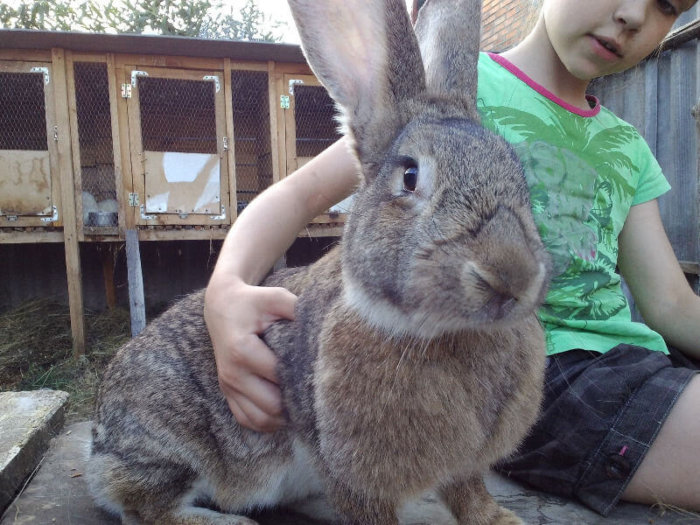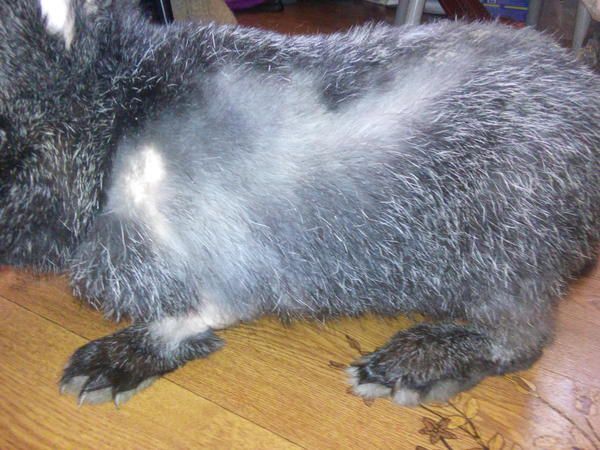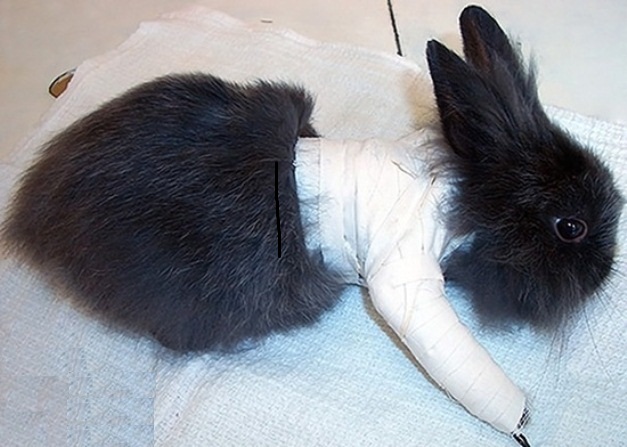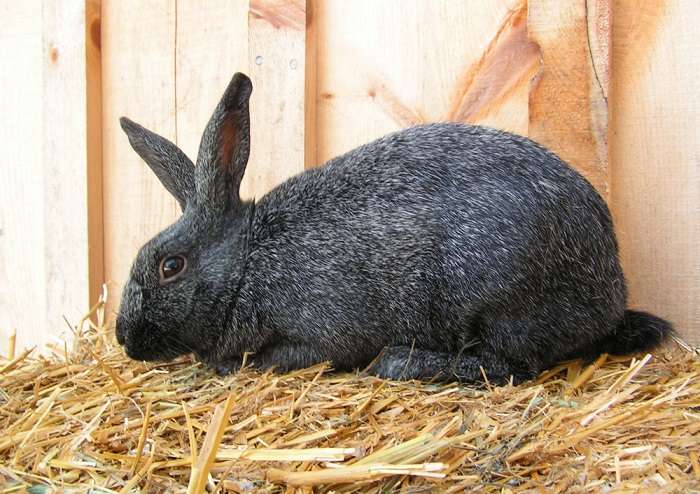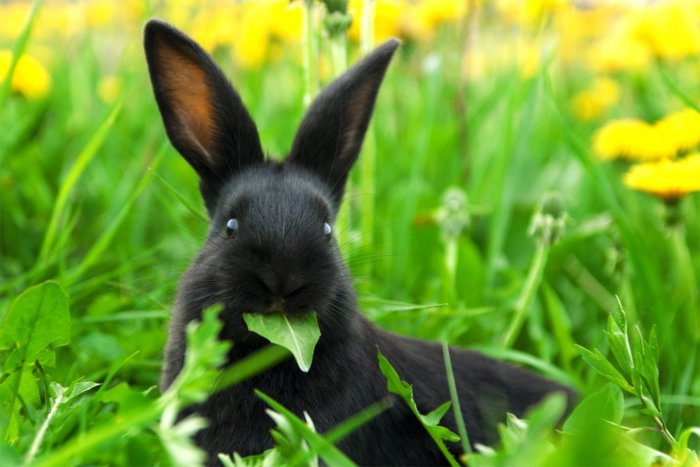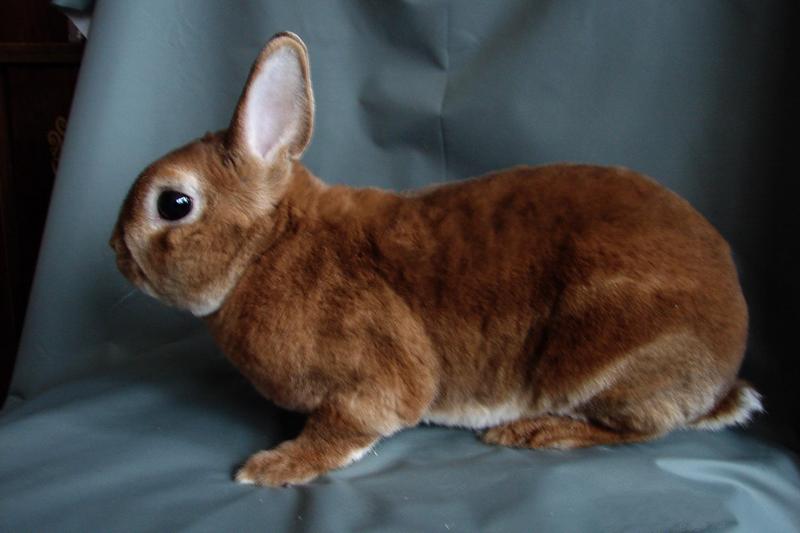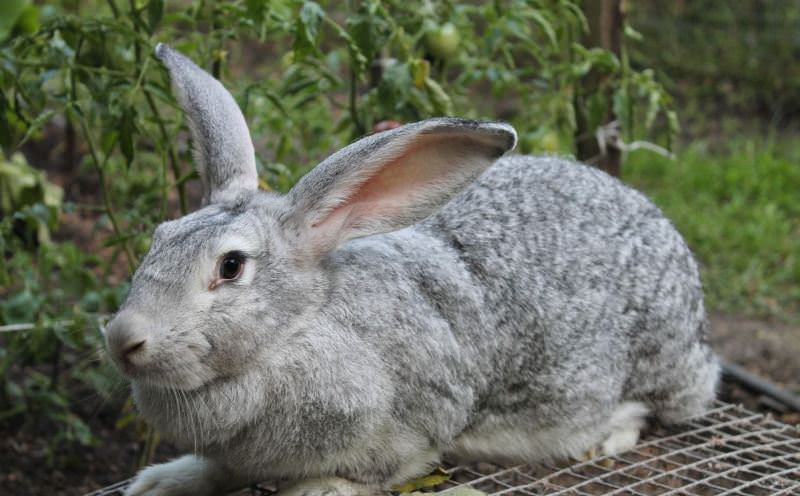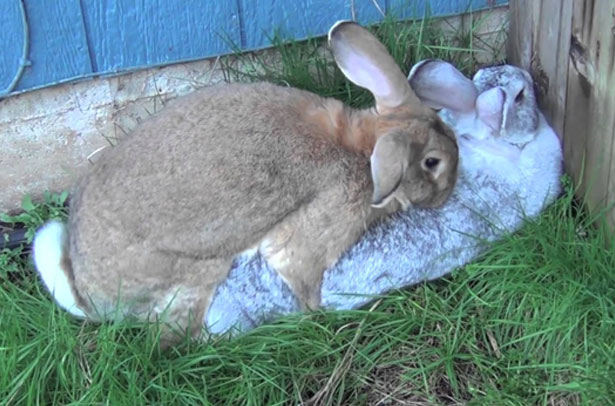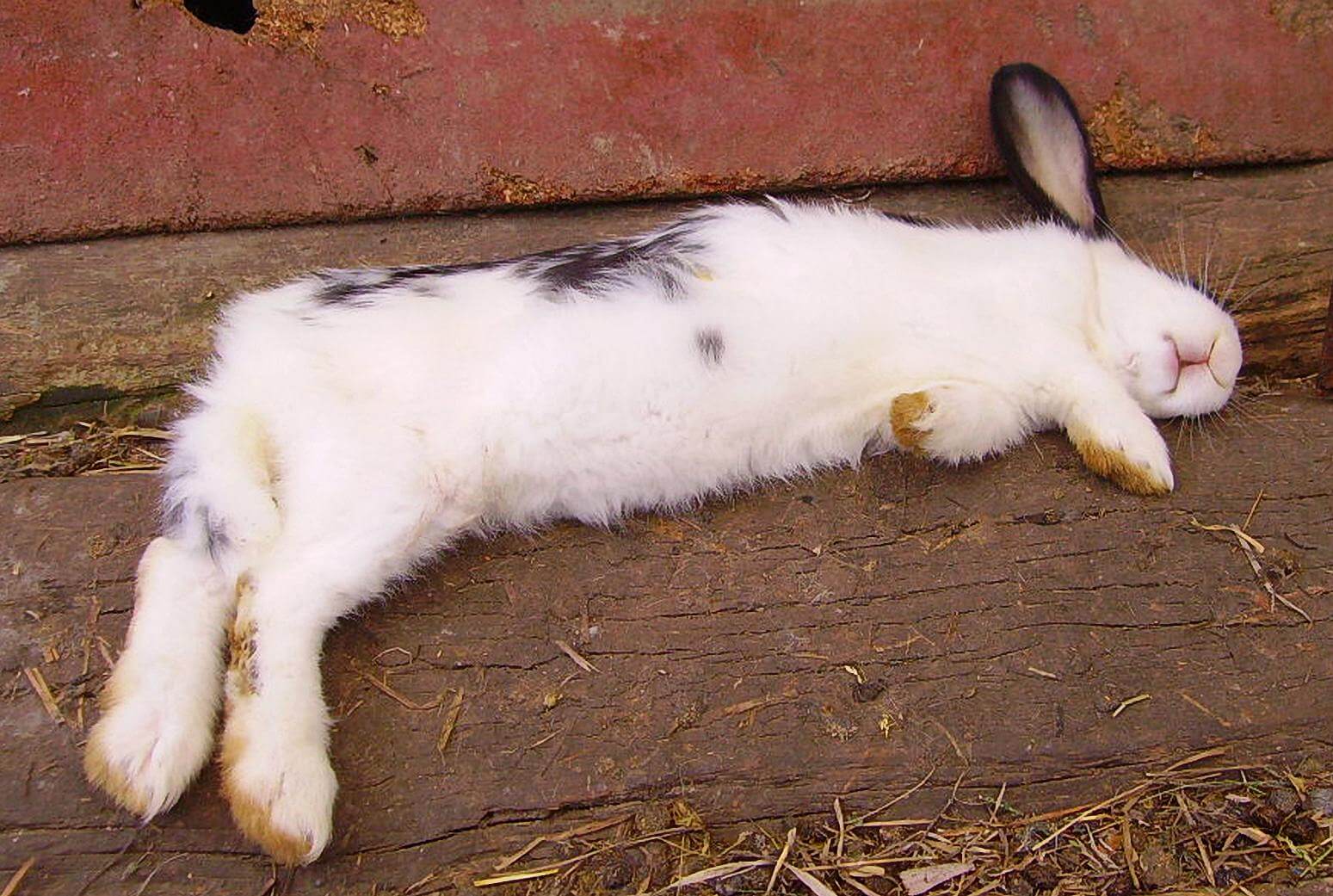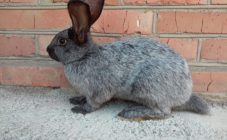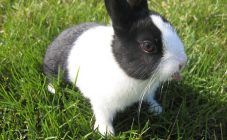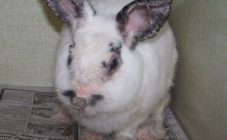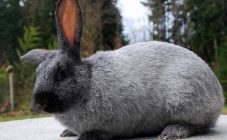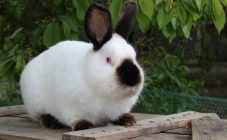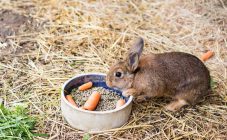Content:
Rabbit breeding is widespread. Among the main reasons for this are their high fertility, as well as characteristics of early maturity. The article will describe in detail how the breeding of these animals takes place.
Rabbit as a pet
Biologically speaking, rabbits are rodents. They are part of the Hare - this is what family the rabbits belong to. The domestic rabbit has a wild breed as its ancestor. He descended at one time from the southern European wild.
Usually, by mating domestic and wild individuals, you can get offspring that have a certain quality and are suitable for industrial rabbit breeding.
The rabbit eats exclusively plant foods.
During the first 10 days of life, the rabbit still does not see anything. After that, his eyes open. The first fluff is formed after he turns seven days old.
Until the age of 18 he has only milk teeth, which are then replaced with permanent ones. This process ends by the time the animal is one month old.
Three molts occur during the first year:
- the first occurs in a month;
- at four months, the rabbit sheds again;
- at seven and a half months there will be a third molt.
Usually in these animals, age-related seasonal molting occurs throughout their lives.
At birth, a rabbit weighs from 40 to 60 g. When only 2 days pass, the weight doubles, and in a month the weight increases tenfold.
A standard rabbit weight at the age of 3-5 months averages up to three and a half kilograms.
These animals are kept in cages in the fresh air with separate sections for eating and drinking. In winter they are kept indoors.
The skeletal system of these fluffy animals cannot be called strong. These are the biological characteristics of rabbits. The bones of the limbs are tubular and fragile. Their ridge also has a delicate and fragile structure. Such features lead to frequent injuries. In addition, the painful sensations from bone injuries in these animals are very strong. If there is a spinal injury or a broken leg, the pain can paralyze the rabbit. This will raise the rabbit's body temperature. How to calm the rabbit in this situation, there is no answer.
Rabbit teeth
Since the rabbit eats plant-based foods, the teeth have a special structure. If you count how many teeth a rabbit has, then there will be 28 of them: 22 of them are molars and 6 are incisors.
Rabbit teeth grow in two types: molars and incisors. At the same time, the incisors grow continuously in the expectation that rabbits will constantly gnaw on solid food and grind their teeth as they grow. The furry animals have no fangs at all. A person's teeth do not grow like a rabbit's.
How long do rabbits live?
Life expectancy in most cases does not exceed eight years. How to determine the age of a rabbit, there are no simple signs.
What rabbits eat
The diet for industrial breeding of rabbits includes only plant foods, including:
- compound feed;
- roots;
- forbs;
- hay.
You can also make your own compound feed. It can be made with grains, minerals, and herbal flour. In this case, it will turn out to save a little on the nutrition of fluffy animals.
Rabbit species
The differences are based on the fact that domestic rabbits are usually kept at home. It is recommended to choose a breed that does not have a lot of fluff in order to live and not litter in the apartment. It is also desirable that she has a short coat that will require less maintenance. A domestic rabbit is usually devoted to its owners, does not gnaw furniture in the house.
Rabbits, which are raised for industrial purposes, in their behavior do not make efforts to make life easier for their owners, but go about their daily activities. This must be taken into account when thinking how to distinguish a decorative rabbit from an ordinary one.
Decorative rabbits
When determining who to buy, one popular choice would be the Lop-Eared Sheep breed. One of its hallmarks is its long, drooping ears.
On the one hand, this and other breeds of decorative rabbits behave in such a way as not to quarrel with their owners. On the other hand, in order to support them, you need to take care of them and satisfy your needs.
Although it is not possible to walk every day, some owners have adapted cat baths for a similar purpose for their toilet.
The following breeds may also be suitable:
- Short-haired colored dwarf.
- Rex breed.
- Angora Dwarfs.
- Hermelines.
Game rabbits
When breeding these fluffy animals, you need to be able to choose the most suitable breed. You can do rabbits for different reasons:
- for the sake of rabbit fur;
- for tasty, delicious and nutritious rabbit meat;
- in some cases, breeders are interested in obtaining rabbit fluff.
In some cases, these pets are of interest to the owners for several reasons. In addition, it should be borne in mind that when keeping rabbits, in addition to their main focus, they are also capable of providing fertilizers.
Some of the most famous breeds:
- The gray giant will be large and fast growing. The weight of one individual can reach seven kilograms. Well suited for those who want to deal with rabbits for meat.
- The Vienna Blue breed has a special skin color. It is bred for the fur direction.
- California rabbits are suitable for meat and fur production.
- The Flandre breed has French roots. Live weight is usually four kilograms. Suitable for meat production.
- Chinchilla rabbits have a special fur for which they are bred.
- There is a breed called Downy Rabbits. The hair cover consists almost entirely of fluff. One animal produces almost 700 g of down per year.
Reproduction
If the rabbit is a healthy female, then within a year she will bring quite large offspring. If the female is obese, it will cost her that she will not be able to give birth.
However, this problem can be corrected. To do this, you need to adjust the rabbit's diet. If you feed it with greens and limit the consumption of cereals and compound feed, then, after a while, it will return to normal.
Usually, a rabbit gives birth at least six times during this period. If you calculate the total number of rabbits that she will give birth to in a year, then this is usually about 25 rabbits. When they become adults, the amount of meat that can be obtained from them will be approximately 70 kg.
Right after birth, the rabbits need care. They become self-sufficient after three or four weeks. This is manifested in the fact that from now on they will be able to take not only milk, but also regular food. At the same time, they will not refuse milk anyway.
It is easy to determine how babies eat by looking at their appearance.If their skin is smooth, they themselves behave calmly, then the rabbit has a lot of milk, the temperature of the rabbit is the norm. Otherwise, there is not enough of it.
It is interesting that the rabbit does not want to raise other people's cubs. The fact is that these fluffy animals, although they see poorly, have a good scent. If you put someone else's rabbit on her, she will immediately recognize him by smell.
In order to mate, it is necessary to select females that are in good health and have a high milk production. Do not use those rabbits that are known to eat their offspring.
Seasonality does not affect the breeding processes of these animals.
Possible diseases, vaccinations
Rabbits, like other pets, are at risk of dangerous diseases. The most common are the following:
- Myxomatosis, which is a viral disease.
- Hemorrhagic viral disease is also caused by viruses.
In the first case, sick animals develop conjunctivitis in a special form, painful bumps form all over the body. When the disease occurs in an edematous form, it gives an almost one hundred percent chance of death.
If the disease proceeds in a nodular form, then the rabbits do not die from it. Moreover, in this case, treatment can be done.
However, one of the features of this disease is that. That it provokes various secondary diseases. In some cases, rabbits develop stomatitis in this situation.
Hemorrhagic disease, according to scientists, is of Chinese origin. The first information about mass diseases of rabbits dates back to the eighties of the last century. It is interesting that little rabbits are not susceptible to this disease at all.
This disease is very secretive. Symptoms are difficult to calculate and can only be noticed with close observation. Often fatal to animals. Outwardly, it looks like this: the rabbit makes several convulsive movements with its paws and dies.
Death often occurs so quickly that symptoms have not yet appeared during this time. The diagnosis is made on the basis of an autopsy of the deceased animal. In this case, hemorrhagic rashes can be found on the internal organs. The cure for this disease is unknown.
Vaccination of rabbits is one of the effective means of combating diseases. At the same time, they are given weakened pathogens, the body overcomes them, and immunity is acquired for a while.
Newly born rabbits are vaccinated against these diseases. They are done in the following order:
- When the bunny is 45 days old, he is given the first vaccination to combat hemorrhagic disease.
- After 14 days have passed, a vaccination against myxomatosis is performed.
- Re-vaccination to combat myxomatosis is performed after three months have passed from the first.
- After another 14 days, another vaccination is performed, which is directed against hemorrhagic disease.
When thinking about why a rabbit has hot ears, you need to understand that a disease may be the cause. It's best to show it to your vet.
How to choose a rabbit
In order to choose animals, you need to remember that you should not buy them if they are less than one month old. In this case, they have weak immunity, and they are painful and are unlikely to be able to produce healthy offspring.
When buying, you need to pay attention to the following features:
- Preferably the coat is smooth and shiny.
- You need to carefully examine the eyes. They should be clear and clean. In this case, you need to make sure that there is no discharge.
- We need to take a closer look at the type of body. The rabbit should give the impression of a muscular hare.
- According to the build, the fur-bearing animal should be moderately well-fed.There should be no obesity or dystrophy.
- The high physical activity of the rabbit should be visually noticeable.
If these conditions are met, a rabbit can be a good purchase at a pet store for those who want to start breeding these animals.
